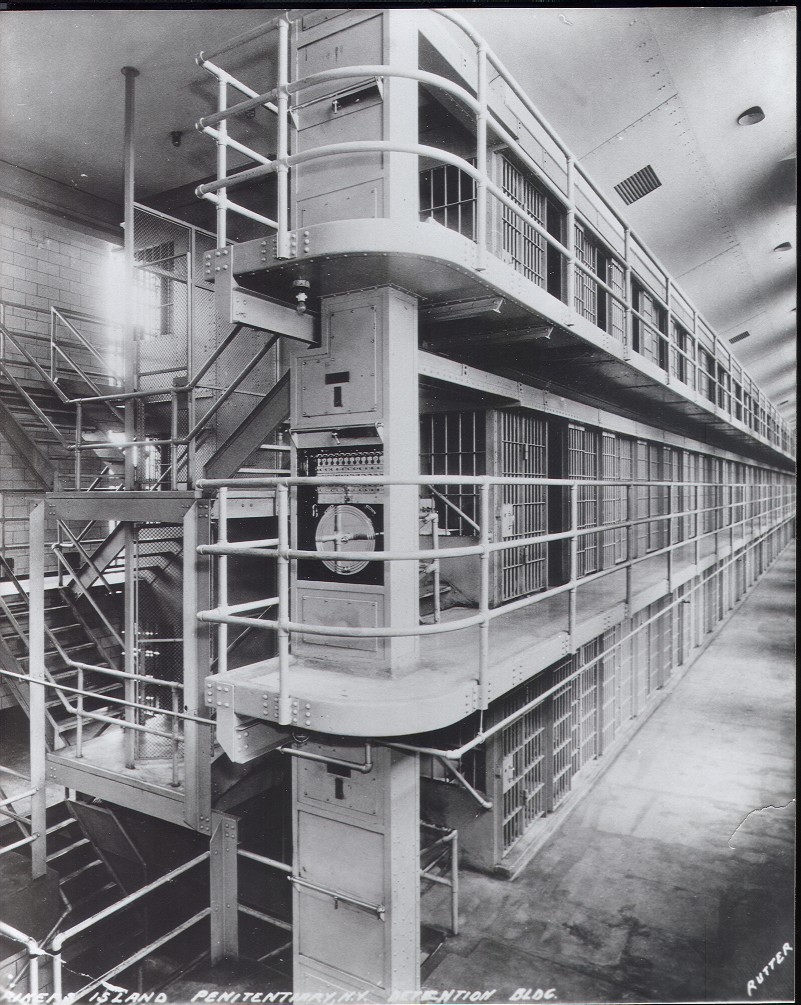Historic Rikers Island
7/29/2011
Rikers Island 2700 Mechanical Locking System – 8 Decades and Still Working
 A recent email from Thomas C. McCarthy, General Secretary/Webmaster for the New York Correction History Society, began our company’s reconnection with the first major prison project for Southern Prison Company, Rikers Island Penitentiary in New York City, built in the early 1930’s. Southern Prison Company, later renamed Southern Steel Company and now Southern Folger, continued to publicize this project in 1960’s sales literature as “the largest City Jail in the United States”, which also stated that:
A recent email from Thomas C. McCarthy, General Secretary/Webmaster for the New York Correction History Society, began our company’s reconnection with the first major prison project for Southern Prison Company, Rikers Island Penitentiary in New York City, built in the early 1930’s. Southern Prison Company, later renamed Southern Steel Company and now Southern Folger, continued to publicize this project in 1960’s sales literature as “the largest City Jail in the United States”, which also stated that:
“The cellwork, locking devices, and other prison equipment in this institution were furnished and installed by Southern Steel Company. There have been no service calls or replacement of parts on any Southern Steel Company equipment since this prison was occupied more than 30 years ago…an indication of the quality and dependability engineered into Southern Steel Company’s products.”
While the facility no longer houses inmates and is now named the James A. Thomas Center, the Southern Steel 2700 mechanical continual motion locking system still works after some 80 years. According to McCarthy, “this facility continues to be used for a variety of administrative and program activities. It is often a must-see site for criminal justice system professionals on tours of the island. The locking system is always a high point of their visit to the old penitentiary.”
Original photos in the Southern Folger archives were shared with the New York Correctional History Society, showing th e cell lines with the 2700 locking mechanism, shown above, and the penitentiary complex under construction. Don Halloran, President of Southern Folger, shown in the photo at right, recently toured the original Rikers site, and commented, “The history surrounding this facility is incredible, and I am glad the New York Correction History Society is working to capture this history and preserve it.” See more history of Rikers Island and other New York facilities at www.correctionhistory.org.
e cell lines with the 2700 locking mechanism, shown above, and the penitentiary complex under construction. Don Halloran, President of Southern Folger, shown in the photo at right, recently toured the original Rikers site, and commented, “The history surrounding this facility is incredible, and I am glad the New York Correction History Society is working to capture this history and preserve it.” See more history of Rikers Island and other New York facilities at www.correctionhistory.org.

